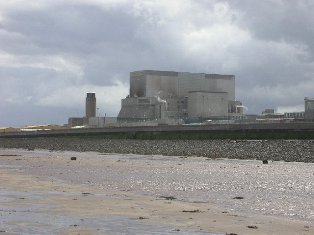 |
Hinkley Point (Image: Robin Somes) |
In May the UK Nuclear Installations Inspectorate confirmed operation until January 2017 was safe in principle subject to BE carrying out a certain program of work, as well as specific work for the life extension. From April 2008, BE expects to invest an additional GBP90 million ($184 million) in the plants due to their longer lives.
Recently, both plants have suffered performance problems related to cracking of tubes in boilers, which in AGRs are integrated within a concrete reactor containment structure. In addition, aging effects on the core restraint structures at Hinkley Point B have caused BE to conduct extra analyses.
All four reactors are currently operating at around 60% of generation capacity, and BE is planning 'boiler balancing work' which would enable that to rise to 70%. The company said that further life extension beyond 2016 at 70% capacity would be considered in 2013 but would be economically justified for electricity prices of GBP27 ($55) per MWh or above. The average for 2006 was GBP55 ($113) per MWh.
British Energy said in a release that it expected to spend GBP190-210 million ($390-430 million) on "plant projects, major repairs and strategic spares" for its fleet, excluding GBP60-70 million ($123-143 million) on Hinkley Point B and Hunterston B.
Nuclear power provides about 20% of UK electricity, with most of that coming from BE's AGR fleet. Current plans would see only one operational nuclear power plant in the country by 2023, so BE is keen to replace the aging and increasingly unreliable AGRs with new internationally standardised units. However, any moves to invest in new nuclear power plants must wait until the government issues a policy statement as a result of its recent public consultation. This is expected in early January 2008.
Further information
British Energy
WNA's Nuclear Power in the United Kingdom information paper
WNN: UK supply concerns as BE units remain offline
WNN: Aging causes grey hairs at British Energy
WNN: Safety reviews for Hunterston B and Hinkley Point B





_63865.jpg)
_18570.jpg)
_16159.jpg)





